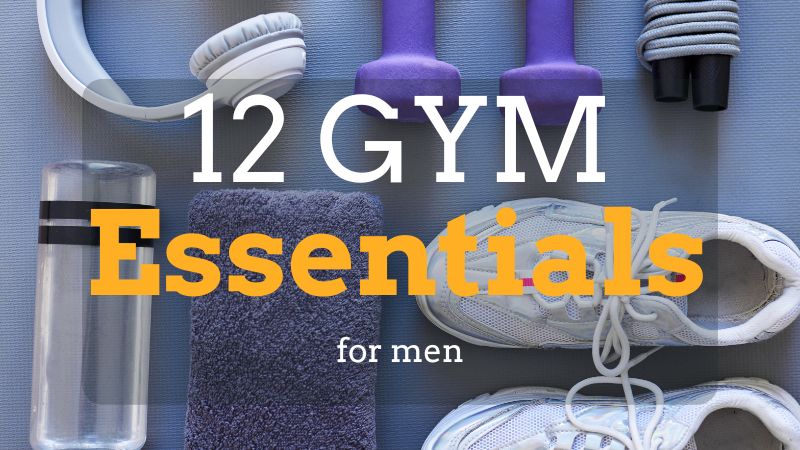
Gym Essentials For Women:A Complete List
Enthusiasts who never miss a session, understanding the gym essentials for women is crucial, not just for what to wear but also for what to

The average bench press, often referred to humorously in gyms as ‘How much ya bench’ or ‘whaddaya bench?’, stands as a quintessential measure of strength in the realm of weight training exercises, earning its reputation as the ‘great leveller’.
Stripping down to the basics, the bench press tests your strength, pound for pound, revealing where you stand in terms of physical prowess. This evaluation, however, isn’t singular; it’s one part of a comprehensive assessment of your strength.
For men in their thirties, it’s common to bench press about 90 percent of their body weight, though this figure fluctuates based on a variety of factors including one’s fitness level and training intensity.
Determining how much you can bench press encompasses more than just raw strength; it takes into account your fitness journey, natural abilities, and even your goals. For those new to lifting, starting with a standard 45-pound barbell or a lighter 22-pound training bar is advised to hone technique.
Moreover, it’s essential to emphasize good form and a gradual increase in weight to sustain your progress. Whether you’re a beginner or an advanced athlete capable of lifting twice your body weight, understanding and setting realistic goals based on bench press averages can be motivational.
Remember, these averages serve as a guideline; each person’s capability is unique, and achieving personal best is what truly matters.
Embarking on a bench press journey requires the establishment of personal objectives. These should be grounded in realism, attainable, and customized to fit your unique preferences, lifestyle, and level of fitness.
Consider your background in strength training and your ultimate aims, whether they be to enhance athletic prowess, engage in bodybuilding, or participate in powerlifting. It’s important to select a regimen that aligns with your specific requirements.
Your capability in the bench press is significantly influenced by your current level of fitness and your experience with strength training. Lifters can generally be classified into one of the following categories:
It’s essential to recognize that bench press standards differ widely across these experience levels, highlighting the importance of setting goals that are realistic and achievable based on your current capabilities.
Bench press achievements can vary significantly across different age groups and between genders. For the average adult male, hitting these benchmarks can be quite impressive:
For women, the benchmarks are usually set at 0.65, 0.85, and 1 x bodyweight, reflecting the general consensus in most gyms.
It’s important to delve deeper into factors such as age, physique, and level of fitness or lifting experience. Typically, an average man under normal conditions should be able to bench press around 90% of his body weight.
If you’re in good shape and regularly visit the gym, aiming for 1 x your bodyweight is a reasonable standard. On the other hand, someone with advanced fitness levels or elite athletes might be expected to lift well over twice their body weight.
Consider a 220lbs man in his twenties as an example:
Men generally peak in strength during their 20s and 30s, with a gradual decrease in capability as they age. Thus, the expected lifting weight adjusts accordingly:
Age and gender are pivotal in setting the right benchmarks, understanding progression, and adapting program variations. Taking these into account ensures your bench press goals are realistic, achievable, and tailored to your demographic.
If you find yourself measuring beneath certain benchmarks in your fitness journey, it’s crucial to remember that progress is not solely defined by numbers. The importance of gradual improvement cannot be overstressed, akin to how no one steps into a gym for the first time already in peak physical form, capable of clinching bodybuilding titles.
The incessant habit of comparing one’s progress and abilities with others can become a source of discouragement.
Instead, a more fruitful approach is to concentrate on your personal growth and to tune into the feedback your body provides. Start by getting accustomed to your current capabilities, such as the weight you can comfortably bench press.
Then, methodically enhance your strength from there, ensuring you also focus on fortifying your core muscles. This balanced development is vital to prevent injuries as you gradually engage with heavier weights.
Moreover, the role of nutrition in expediting your fitness journey cannot be overstated. A balanced diet, rich in nutrients that foster lean muscle growth, alongside ample hydration to compensate for fluid loss through sweat, is foundational. Beyond these essentials, mastering the correct technique takes precedence.
Proper form not only maximizes the effectiveness of each workout but also minimizes the risk of injury.
It’s about focusing on quality over quantity; each repetition should be performed with meticulous attention to form to ensure optimal results.
The foundation of a productive bench press routine lies in the mastery of form and grip. To elevate your technique, focus not just on the basics but delve into the nuances. Once positioned on the bench with the barbell aligned over your chest, consider the width of your grip.
While a shoulder-width grip is standard, slight adjustments can target muscles differently: a narrower grip emphasizes the triceps, whereas a wider grip can increase chest activation. Experiment within safe limits to find your optimal grip.
Engage your core throughout the lift, not just your upper body. A firm core acts as a pillar of strength, enhancing stability and power.
Pay attention to your wrist alignment too; wrists should remain neutral, avoiding excessive flexion or extension, to prevent strain and ensure force is directly transferred to the lift.
Beyond basic inhalation and exhalation, implement the Valsalva maneuver—a technique where you breathe in and hold your breath during the lift’s most strenuous phase, then exhale upon completion. This method increases intra-abdominal pressure, providing a solid core to press against.
However, it’s crucial to understand your body’s response to such techniques, as they’re not suitable for everyone, particularly those with cardiovascular concerns.
Incorporate dynamic leg drive not just by planting your feet firmly, but by actively pressing them into the ground throughout the lift. This action should feel like a coordinated effort contributing to the bar’s upward motion, turning the bench press into a full-body exercise.
While incline and decline bench presses are staples for targeting different chest areas, integrating accessory movements can further enhance muscle growth and symmetry.
Cable flyes, chest dips, and push-ups can complement your routine, addressing any imbalances and improving overall chest aesthetics.
For those looking to push their limits, explore the use of pause bench presses—holding the bar at chest level for a few seconds before pressing it up. This technique develops explosive power and control, particularly beneficial for overcoming sticking points.
As you incorporate these advanced techniques and variations, always prioritize safety. Use a spotter or safety bars when attempting heavy lifts or new variations.
Progress gradually, focusing on technique over ego. Remember, the bench press is a skill that benefits from thoughtful practice and patience.
By delving deeper into the art and science of the bench press, you can transform your approach, ensuring not just impressive strength gains but also a balanced, injury-free lifting journey.
Embarking on a bench press journey requires a nuanced approach to volume, sets, and repetitions. A framework of 3-5 sets of 5-8 repetitions serves as an excellent foundation. This regimen balances muscle stimulus for growth and strength enhancement while safeguarding against overtraining and ensuring sufficient recovery. Consider this progression for an initial 4-week cycle:
Adapt the sets and repetitions to align with your goals, fitness level, and training experience. A deload week is crucial for allowing muscles to recover, repair, and grow stronger.
The principle of progressive overload is paramount. To foster consistent gains, incrementally augmenting the stress placed on your muscles is essential.
Elevate your bench press game not just by upping the weight but also by refining technique, augmenting the number of repetitions, or enhancing set volume. For instance, following a baseline week where you bench 135 lb for 5 reps:
Documenting your progress is vital to gauge your improvements and make informed adjustments to your program.
To fortify your bench press, integrating targeted assistance exercises enriches your training, bolstering chest, triceps, and shoulder strength. Strategic inclusion of assistance exercises enhances overall upper body power and supports bench press proficiency. Expand your routine with:
Executing these exercises with impeccable form and mindful control maximizes their effectiveness. Allow for rest and recovery between sets to facilitate optimal performance and muscle growth.
Elevating your bench press capabilities requires more than just dedication to the lift itself; incorporating a variety of accessories into your regimen can significantly enhance performance and technique.
Certain basic tools and exercises play a pivotal role in strengthening key muscle groups, improving stability, and preventing injuries. The following are the essential accessories which can improve your experiences of bench press:
The close grip bench press stands out as a specialized variation, primarily focusing on triceps enhancement and optimizing the lockout phase of the bench press.
By adopting a grip that is significantly narrower than what is used in the traditional bench press, this variation intentionally minimizes pectoral involvement, thereby channeling greater workload onto the triceps.
This shift not only fortifies the triceps but also contributes to overall upper body strength and stability, making it an indispensable tool for those aiming to improve their bench press performance.
Proper execution requires careful attention to grip placement—ideally just inside shoulder width—to maximize triceps engagement while minimizing the risk of wrist strain.
The wide grip bench press stands out as a pivotal variation for those aiming to accentuate the development of the pectoral muscles, especially targeting the outer regions of the chest.
By adopting a grip that extends beyond shoulder width, practitioners not only alter the lift’s biomechanics but also significantly increase the exercise’s range of motion.
This adjustment not only places a greater stretch on the pectorals during each rep but also potentially amplifies overall bench press strength by engaging these muscles more intensely.
However, it’s crucial to approach this variation with caution; the increased range of motion demands meticulous attention to form to mitigate the risk of shoulder strain.
Proper warm-up and gradual progression in weight and intensity can ensure the wide grip bench press serves as a powerful tool in your chest-building arsenal, enhancing both aesthetics and functional strength.
The long pause bench press stands as a rigorous variation designed to enhance control, power, and stability within the bench press discipline.
By incorporating a prolonged hold of 3-5 seconds at the bottom of the lift, this technique intensifies the challenge on the pectorals, deltoids, and triceps, demanding exceptional muscle engagement and mental focus.
This deliberate pause not only cultivates a stronger mind-muscle connection but also significantly bolsters one’s ability to manage and press heavier weights with confidence.
The extended tension period increases time under tension (TUT), a critical factor for muscle growth and endurance improvement.
Incorporating the long pause bench press into your routine can dramatically improve your standard bench press performance, offering benefits in strength, control, and muscular development.
The pin press emerges as a strategic exercise conducted within the confines of a power rack, where safety pins are meticulously positioned to curtail the range of motion at predetermined points.
This targeted limitation is specifically designed to hone in on and overcome individual sticking points, a common challenge in the bench press progression.
By starting the lift from these static positions, you can concentrate effort and strength development precisely where it’s needed most, significantly enhancing lockout capabilities.
This method not only bolsters overall bench press performance through improved explosive power but also offers the added benefit of safely experimenting with heavier loads without the need for a spotter.
Incorporating the pin press into your training regimen allows for a focused improvement in technique and strength, particularly in those critical phases of the lift where momentum is lost and true power is tested.
With careful attention to form and a systematic approach to incrementing weight, the pin press can be a pivotal tool in pushing past plateaus and achieving new personal bests in bench press prowess.
The board bench press, an inventive variation of the conventional bench press, employs a wooden board or another sturdy object placed directly on the chest to deliberately shorten the range of motion.
This ingenious approach allows athletes to isolate and intensify their focus on specific segments of the bench press path, particularly beneficial for addressing and strengthening identified weak points.
By concentrating the load on a reduced range, lifters can safely increase the weights they handle, effectively overloading the muscles involved in the mid to top phases of the press. This targeted method of training not only enhances lockout strength but also contributes to overall muscle hypertrophy and technical refinement.
When seamlessly integrated into a comprehensive bench press program, the board bench press serves as a powerful tool for overcoming plateaus, sharpening technique, and fostering substantial gains in both strength and muscle development.
The Bench Blaster, a revolutionary training accessory, is ingeniously designed to offer variable resistance levels, thus creating a dynamic spring effect at the pivotal moment of lift-off from the chest.
By effortlessly sliding your arms through its loops until they snugly embrace your biceps, this tool not only facilitates the maintenance of impeccable form but also significantly enhances your lifting capability.
It meticulously guides your elbows to remain tucked, ensures your lats are tightly engaged, and maintains your shoulders in an optimal position throughout the lift.
The distinctive spring effect inherent to the Bench Blaster empowers lifters to safely handle and experiment with weights that were previously beyond their reach, promoting a remarkable increase in overall lifting capacity—often enabling users to witness a substantial 10-20% boost in weight.
This increase directly contributes to shattering previous one-rep max records. Integrating the Bench Blaster into your training regimen can transform your bench press journey, offering a blend of safety, form perfection, and unprecedented strength gains.
By progressively adapting to the enhanced load it facilitates, lifters can systematically elevate their performance, pushing through plateaus to achieve new heights in muscle development, power, and bench press mastery.
Ensuring safety is paramount when engaging in bench-pressing activities. Maybe you are scared about being trapped under the bar or other dangerous things that happened during the bench press.
So the necessity of having a spotter alongside and the utilization of safety racks are crucial for maintaining a secure and productive workout environment.
These precautions not only prevent potential injuries but also instill confidence during your lifting sessions, allowing you to focus on form and performance without the looming fear of accidents.
Employing a spotter during bench press sessions is essential for multiple reasons, significantly enhancing both safety and efficacy of your workout:
To leverage the full benefits of having a spotter, it’s important to:
Adhering to these guidelines not only secures a safer lifting environment but also fosters a more productive and encouraging workout experience, allowing you to focus on achieving your lifting goals with confidence.
Safety racks, commonly referred to as power racks or squat racks, stand as indispensable assets within any bench press setup, fulfilling a multifaceted role.
These structures are not only pivotal for securely holding the barbell between sets but also play a crucial role in ensuring safety throughout the execution of the exercise. Here’s a deeper dive into the advantages they offer:
When incorporating a safety rack into your routine, it’s vital to:
Wrist wraps are invaluable for anyone looking to enhance their bench pressing capabilities. By stabilizing the wrists, they significantly reduce the risk of strain and prevent hyperextension, ensuring your wrists remain in an optimal position beneath the bar.
Available in various lengths and stiffness levels, wrist wraps allow for customization to match personal preference and support needs, ensuring both comfort and efficacy during lifts.
Elbow sleeves serve as another essential component of a lifter’s arsenal, providing enhanced stability and compression for the elbow joints.
Their supportive design aids in maintaining joint warmth, which is crucial for the efficiency of connective tissue warming, thereby reducing the risk of injuries during intense lifting sessions.
The added stability from elbow sleeves not only improves performance but also increases confidence in handling heavier weights, making them a must-have for serious lifters looking to push their limits safely.
Together, these accessories not only safeguard against common lifting injuries but also contribute to a more effective and efficient workout, enabling lifters to achieve their strength goals while maintaining joint health and integrity.
Comparing bench press achievements to other fundamental exercises, such as squats and deadlifts, provides valuable insights.
These exercises are quintessential markers of overall muscular strength and development. Typically, bench press numbers are lower than those for squats and deadlifts, reflecting the involvement of smaller upper body muscles versus the more substantial muscle groups utilized in lower body workouts.
Key factors in elevating bench press performance include:
Attaining and sustaining lean muscle mass positively influences bench press capabilities. Together, these strategies form a comprehensive approach to advancing your bench press, underscoring the importance of nutrition, supplementation, and rest in achieving lifting excellence.
Mastering the average bench press involves a multifaceted approach that extends beyond mere strength training. It encompasses a holistic view, integrating proper nutrition, strategic supplementation, and essential recovery practices.
By embracing a regimen that includes varied techniques, safety measures, and accessory exercises, individuals can build a solid foundation for not only achieving but exceeding the average bench press standards.
This pursuit, while challenging, offers a rewarding path to enhancing physical prowess and achieving personal bests, underscoring the importance of patience, perseverance, and a well-rounded approach to fitness.
Can bench press variations impact my overall strength differently?
Yes, incorporating variations such as the incline and decline bench press can target different muscle groups, thereby improving your overall upper body strength. Each variation focuses on specific areas, contributing to a more balanced and comprehensive muscular development.
How do I know if I’m ready to increase the weight I’m bench pressing?
A good indicator is being able to complete your set number of repetitions with proper form comfortably. If the last few reps of your sets feel manageable without compromising technique, it might be time to gradually increase the weight.
What role does core strength play in enhancing my bench press?
A strong core stabilizes your body during the bench press, allowing for better force transfer from your upper body to the bar. Strengthening your core can lead to improvements in your bench press performance by enabling you to maintain proper form and handle heavier weights safely.
Are there specific nutritional considerations that can help improve my bench press performance?
Yes, a diet rich in protein is essential for muscle repair and growth, while carbohydrates provide the energy needed for your workouts. Additionally, staying hydrated and considering supplements like creatine can further enhance strength and recovery.
What’s the best way to prevent injuries while bench pressing?
Preventing injuries involves maintaining proper form, using safety equipment like racks and spotters, and not overloading the bar before you’re ready. It’s also crucial to incorporate warm-up exercises and ensure your body is adequately prepared for the stress of bench pressing.
The following are fitness bloggers we have carefully selected for you. Not only bench press, they also have professional insights into other fitness methods:


Enthusiasts who never miss a session, understanding the gym essentials for women is crucial, not just for what to wear but also for what to

A common myth circulating in the fitness world is the belief that a gym diet plan is unnecessary. Many seem convinced that they can simply

Nowadays, we always seem to be packing a bag for something. Whether it’s getting ready for work with your messenger bag or briefcase, filling up

Many water purification processes, including reverse osmosis, not only add minerals to water but also strip it of its natural trace elements. These systems, while

Enthusiasts who never miss a session, understanding the gym essentials for women is crucial, not just for what to wear but also for what to

A common myth circulating in the fitness world is the belief that a gym diet plan is unnecessary. Many seem convinced that they can simply

The average bench press, often referred to humorously in gyms as ‘How much ya bench’ or ‘whaddaya bench?’, stands as a quintessential measure of strength

Nowadays, we always seem to be packing a bag for something. Whether it’s getting ready for work with your messenger bag or briefcase, filling up
Copyright © 2025 remindsmartbottles. All Rights Reserved.
Copy the coupon code below and fill it in when you purchase to enjoy!
newuser